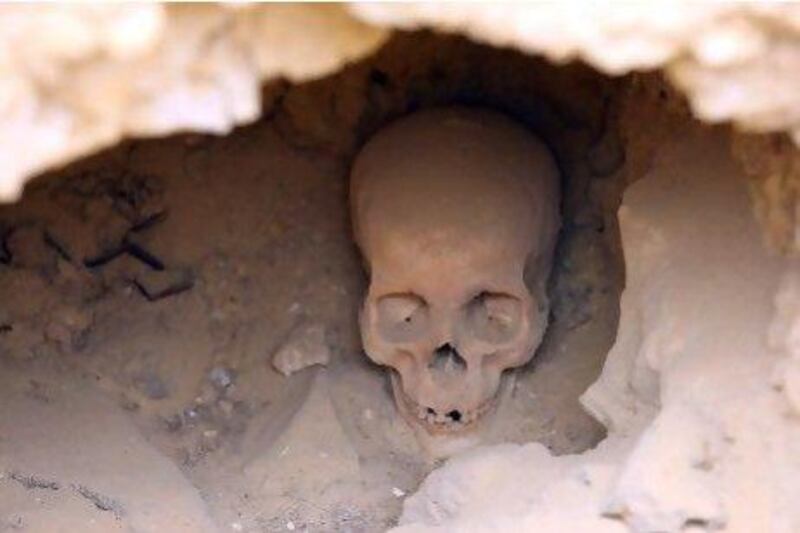DUBAI // When modern man decided to make a move out of Africa 60,000 years ago, there was one big question on his mind.
Which way should I go?
Many scholars believe our forefathers left the Horn of Africa and headed north, which would take them to what is now Egypt. From there, it is theorised, they spread through North Africa and the Levant to the rest of the world.
But another theory suggests the world's first modern immigrants might have taken a different route: the so-called southern route through Yemen and across the Arabian Peninsula.
This would mean that most non-Africans in the world today are descended from those pioneers who made their home in what are now Arab lands.
That view is supported by a research paper released in an American journal last month.
In it, an international team of scientists explains how they used sophisticated genetic analysis techniques to come up with new evidence supporting the view that Arabia was indeed the first place where our migrating ancestors settled.
According to one of the academics involved in the study, it is likely that they passed along the southern coast of the peninsula before crossing into the territory that today makes up the UAE.
Professor Martin Richards of the University of Leeds said: "The timing and pattern of the migration of early modern humans has been a source of much debate and research.
"Our new results suggest that Arabia, rather than North Africa or the Near East, was the first staging post in the spread of modern humans around the world."
The research was led by the by the UK's University of Leeds and the University of Porto in Portugal.
"A major unanswered question regarding the dispersal of modern humans around the world concerns the geographical site of the first steps out of Africa," said Dr Luísa Pereira, from Porto.
"One popular model predicts that the early stages of the dispersal took place across the Red Sea to southern Arabia, but direct genetic evidence has been thin on the ground."
To address this problem, the researchers used mitochondrial DNA analysis, which traces the female line of descent and is used to explore whether different populations are related.
They took samples of DNA from people living in different parts of the world and used the technique to peer back through time at the individuals' lineage. As they compared different lineages they eventually arrived back at a common ancestor - and discovered that the DNA profile of that ancestor survived in people living today in Arabia.
This suggests that billions of people around the world have an ancient ancestry in Arabia.
In some cases the common ancestor was found relatively recently (10,000 to 20,000 years back), but other lineages went much further - as far as 60,000 years back.
Prof Richards, from the University of Leeds, added: "We're looking at some particularly rare ones that are among the oldest, and what we've seen is that they seem to have their deepest ancestry in Arabia.
"Their ancestors then spread into the Near East and Europe rather than, for example, having ancestry in the Levant that then spread to Arabia and Europe. So that's the argument that supports the southern route - the deep ancestry in Arabia, rather than in the Near East."
He said further research into the male line of descent would be needed to provide additional support for the southern route theory.
"I wouldn't say the debate is completely finished, I'm sure people will argue about it, but for us our findings are quite compelling."
One academic who remains unconvinced is Dr Hamad Ben Saray, an associate professor at the history and archaeology department of Al Ain's United Arab Emirates University.
"We cannot be sure about this theory," he said. "We can't say from archaeological materials that we are sure 100 per cent. It is difficult to believe it. But even though it's not been proven we can't at the same time reject it."
The paper, Arabian cradle: Mitochondrial relicts of the first steps along the southern route out of Africa, has just been published in the American Journal of Human Genetics.






